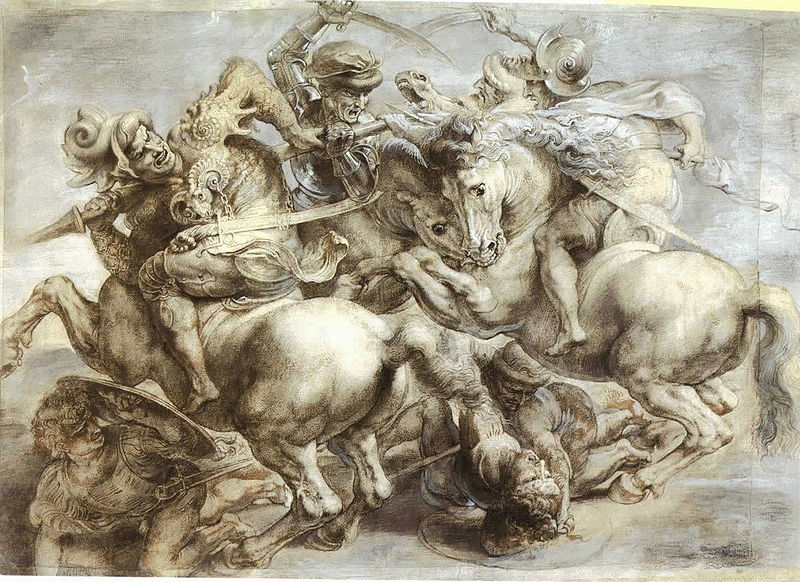| The Battle of Anghiari | |
|---|---|
 |
|
| Artist | Leonardo da Vinci |
| Year | 1505 |
| Location | Palazzo Vecchio, Florence |
One of Leonardo da Vinci’s finest works is The Battle of Anghiari. It was a fresco made by da Vinci in the middle of the 16th century at sometime around 1505. It was a fine work lost in time.
In c. 1503, Leonardo da Vinci was commissioned to do the painting of The Battle of Anghiari for the Sala del Gran Consiglio. This is during the start of the Republican government. The painting depicts a striking, powerful battle between horsemen. The four horsemen depicted in the painting were allegedly considered to be Ludovico Trevisan, Niccolò Piccinino, Francesco Piccinino, and Giovanni Antonio del Balzo Orsini.
Leonardo da Vinci had done several trial projects in this painting in which he was practicing a technique called encaustic. It was done on a board and dried out in a warm environment. Granular plaster was then applied for a flat finish. Then a layer of pitch was applied with the use of sponges. The end product is a base most suitable for oil painting. Leonardo then did an impressive scaffolding of the fresco.
Leonardo da Vinci abandoned the painting in c. 1506 when he left for Milan. The complex and enormous painting remained in da Vinci’s workshop until the Hall was redecorated and then it was lost. The three sketches of this unfinished Leonardo da Vinci painting and some copies of the mural are the only proofs of the existence of the lost mural.
A drawing of da Vinci’s The Battle of Anghiari through the remaining preparatory sketches of the legendary artist was completed by Rubens during the early 17th century at sometime from 1603. He extended the unfinished edges of the central section and the fourth horseman’s sword. The medium used in the painting completed by Rubens were black chalk, pen and ink sharpened with lead white, over-painting with watercolor. This version of Rubens is known as The Battle of the Standard and now sits in the Louvre Museum in Paris.